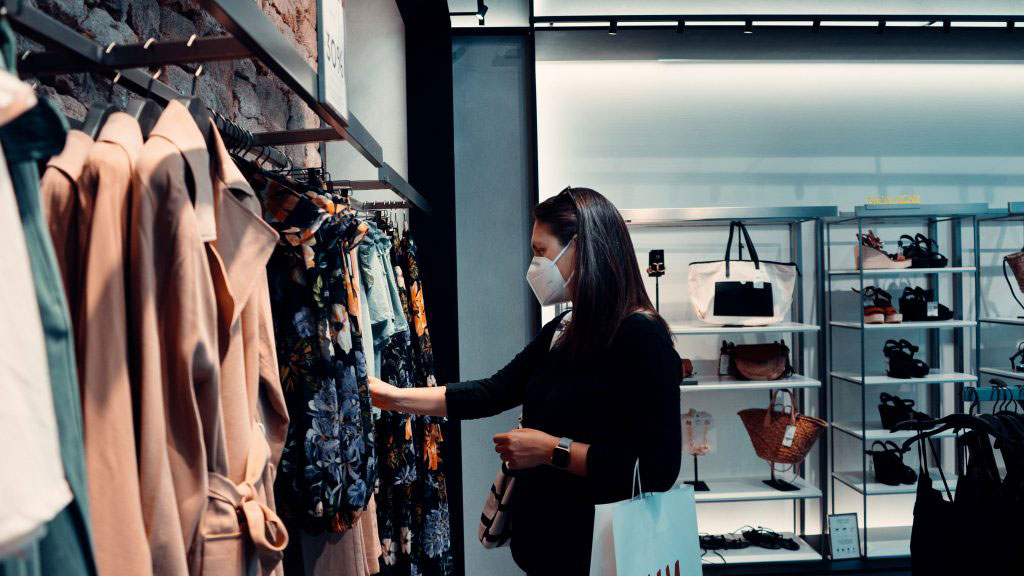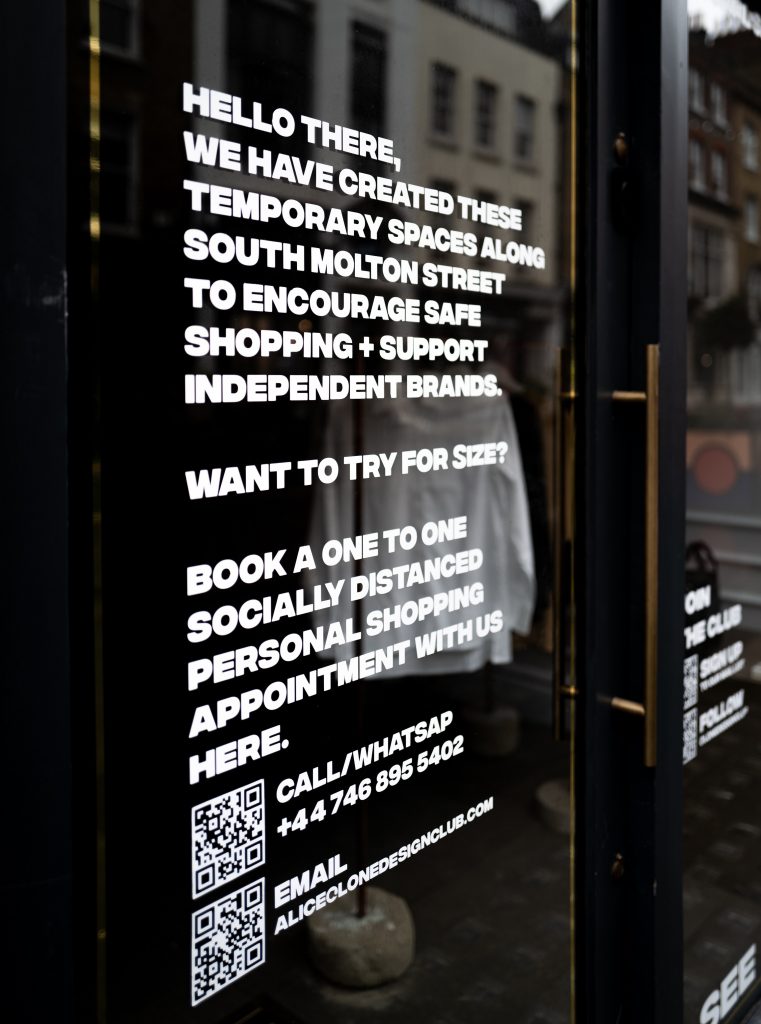“It is not the critic who counts; not the man who points out how the strong man stumbles, or where the doer of deeds could have done them better. The credit belongs to the man who is actually in the arena, whose face is marred by dust and sweat and blood; who strives valiantly; who errs, who comes short again and again, because there is no effort without error and shortcoming; but who does actually strive to do the deeds; who knows great enthusiasms, the great devotions; who spends himself in a worthy cause; who at the best knows in the end the triumph of high achievement, and who at the worst, if he fails, at least fails while daring greatly.” ~ President Theodore Roosevelt.

From global recessions to Coronavirus, fashion businesses have faced increasing challenges, requiring even the strongest brands to pivot and adapt in the face of unprecedented turbulence.
Recently, fashion icons from Brook Brothers to J. Crew to institutions such as Neiman Marcus and Barney’s have closed their doors. Some of those who remain in business have been severely weakened, and job losses, stock market fluctuations and failing competitors make it easy and understandable to panic and think the worst. But as with every crisis, there are those who will survive (and even thrive), which caused me to assess what separates these brands from those who are less fortunate.
Finding Resiliency
As a business owner myself, and as an academic, I have observed firsthand what happens when a crisis hits. In 1999, the Russian ruble was significantly devalued, causing our distributors to lose every penny they earned overnight. In 2008 again, the infamous Great Recession led our main distributor to close shop and exit the industry.
In both instances, we suddenly had to deal with an increase in product overhead, and a drastic drop of demand. The following few years were testing for our business, and it could have easily led to our own departure from the arena of fashion.
I have always been curious about resilience. What makes one business stand the test of time and the challenges that come with it? How does one remain in the arena, even if the face is “marred by dust and sweat and blood”? Having gone through several business challenges myself, as well as through my work as an academic and from interviews with fashion entrepreneurs, there are several common characteristics to resilience:
1. Be authentic
Being authentic goes deeper than being truthful or communicating openly and transparently with your customers. The companies I have observed manage a crisis well are ones who know what their strengths and weaknesses are, and have created a style that is unique.
They are unapologetically themselves, and have a way of communicating with their customers that comes across as real and honest. They do not try to change their style because of a financial crisis or a pandemic. For example, Amina Muaddi – her glitzy, glamorous shoes sold out within hours of hitting the online stores, despite the fact that most of us are not going out nearly as often as before. The reason for her success could be attributed to many factors, such as keeping the inventory low, and having limited styles available. But, what makes her brand a success at a time when fancy shoes should be a hard sell is the fact that she is authentic. She has a style that is authentic, and she did not try to change the style or the way she does business just because a pandemic hit. She doesn’t try to be something for everyone.
In a similar manner, while many fashion brands decided to reduce their seasons, Chanel went against the tide and launched its Cruise collection. The company also said that they have no plans to eliminate fashion shows.
This is an example of a company that knows its strengths and weaknesses, and stays true to its DNA. At a time when many fashion businesses reduced the price of their products, Chanel raised the prices of its handbags. Demand for the bags has remained the same.
2. Focus on what makes you unique:
Each business has a unique set of capabilities that provides it with a competitive advantage. It is something only you can do and have, and it is something that is very difficult to copy and imitate. It could be the sauce you put in your pizza, the way you have set up your manufacturing facilities, or a particular style unique to your brand. You alone can answer what makes your business unique, and it must come from looking at your business with complete honesty.
For my business, I always thought that what made it unique was the fact that we created high quality Italian leather goods, in our very own factory with craftsmen who trained for at least a decade, most of whom have been with us since inception. However, it wasn’t until the recession hit in 2008 that I needed to really understand my core capability and uniqueness and use that in order to survive. This prompted us to focus on our manufacturing capabilities and offer services to some of the leading Italian luxury labels, which helped to diversify our business and provided a much needed revenue source to weather the difficult years.
3. Reframe:
Knowing your core competencies and capabilities will allow your business to focus and withstand the challenges that arise during a crisis, and it may also allow you to reframe your activities in moments when such an option could be the only way to survive.
During the pandemic, many of the fashion labels started to use their factories to produce masks and protective gear. Dior and LVMH used their perfume factories in order to make hand sanitizers at a time when countries went into shortage. Fashion companies not only reframed their capabilities, but also their operations to meet existing needs (and provide much needed support to combat the sanitary crisis).
The crisis has also prompted a reframing in terms of one of fashion’s most visible signs: the fashion show. These shows, which are aimed at showcasing the next season styles and creating the allure and dream of fashion, had to stop. Gucci, Michael Kors, Giorgio Armani were among the many fashion brands that announced a change in schedule, but also hinted they will be rethinking the way usual fashion shows are performed in the future.
Indeed, the 2020 Paris Couture Week was all presented via video and virtually. Once again, we saw the creativity of fashion and luxury houses soar and provide a lesson on how to reframe and continue to reach your audience. When a crisis hits, it becomes an opportunity to make use of your capabilities in a different, more creative way, which is the essence of fashion.
4. Be flexible:
One of the most important traits a business should have is flexibility. This particular intangible asset becomes even more important during uncertain times. When businesses were asked to close for months, tourism halted, and millions of people were left unemployed. Flexibility became a requirement.
I would argue that fashion and luxury are one of the most fragile industries when it comes to facing a crisis. What fashion and luxury sell is a hedonistic product. It sells dreams and beauty, and often at a higher margin (especially if you are in the luxury sphere). When a business is rooted in selling a hedonistic product, then being flexible during a crisis is non-negotiable. How can you have an agile company?
One of the best things you could do for your company, especially if you are a fashion entrepreneur, is to grow at a slower rate. It is tempting to open stores in several countries and to employ more people, but this also means that you will lose a certain level of flexibility and agility. It may also signal the death of your company if you are not able to adapt to the changes fast enough. Therefore, growing slower is an important key for fashion entrepreneurs and designers.
5. Create meaning:
During a crisis, it is understandable for companies to panic and think about the bottom line. Such moments, however, also offer an opportunity for reflection, and can help to clarify the meaning of your company. What is the overall intention of your business? Why did you start it? What meaning does it have for you, and what meaning do you want it to give to your customers?
The answer to these questions may not necessarily translate into immediate financial gains, but they are likely to help you focus and streamline your operations, and focus on what matters most to your business.
Just as many of us who went into lockdown did a personal inventory, you should consider doing the same for your business. Are there ways to connect even better with your customers, or engage in an activity (such as donating a portion of revenues or volunteering) that have meaning to you and your business’s mission?
When Net-a-Porter closed its online operations, it also decided to use their delivery fleet to get supplies to disadvantaged and vulnerable communities. This was not only a way to reframe their operations but also create meaning at a time when it would have been easier to close the operations fully.

Rahul Mishra’s couture collection, Butterfly People, was unveiled virtually, , showcasing the meaning of craftsmanship. To him most meaningful collection he had ever created, putting people back to work, and celebrating artisans and craftsman. When a crisis hits, it is usual to panic and to start worrying about numbers and survival.
But perhaps the way to survive is to discover the meaning in your work. Why did you start your business in the first place? The answer to this question is also part of your competitive advantage, and it is also your why. Why do you do what you do? Once you uncover the very meaning that prompted you to become a designer, and to start a business, it is then you are going to take your business to the next level. Worrying about numbers and survival will be transmuted into meaning – the very thing that makes you get up every morning and start all over again.





